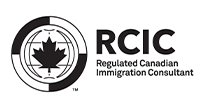A Decade of Express Entry: How It Transformed Canadian Immigration
Introduction
In 2015, Canada introduced the Express Entry system, a groundbreaking immigration program designed to streamline the selection of skilled workers for permanent residency. Over the past decade, this system has significantly shaped Canadian immigration policies, impacting skilled professionals, employers, and the overall economic landscape. As Express Entry completes ten years, it’s essential to reflect on its evolution, successes, challenges, and the path forward.
The Birth of Express Entry
Before Express Entry, Canada’s immigration system was primarily paper-based and often resulted in long processing times. The introduction of the Comprehensive Ranking System (CRS) aimed to make the selection process more efficient and aligned with labor market needs. The program was initially developed to manage applications under three economic immigration categories:
- Federal Skilled Worker Program (FSWP)
- Federal Skilled Trades Program (FSTP)
- Canadian Experience Class (CEC)
Additionally, Provincial Nominee Programs (PNPs) started using Express Entry to select candidates who met specific provincial labor demands.
Key Achievements of Express Entry
1. Faster Processing Times
One of the major achievements of Express Entry has been the reduction in processing times. While traditional immigration programs often took years, Express Entry aimed to process applications within six months. Over time, the system has maintained this efficiency, allowing skilled workers to integrate quickly into Canada’s workforce.
2. Economic Growth and Skilled Workforce
Express Entry has helped Canada attract highly skilled professionals in various sectors, including IT, healthcare, and engineering. By prioritizing candidates with job offers, Canadian work experience, and high educational qualifications, the system has ensured that new immigrants contribute effectively to the economy.
3. Introduction of Targeted Draws
To address specific labor shortages, the Canadian government introduced category-based draws, targeting professionals in high-demand sectors such as healthcare, STEM (Science, Technology, Engineering, and Mathematics), and trades. This strategic selection process ensures that immigration aligns with economic priorities.
4. Increased Provincial Participation
Over the years, more provinces have utilized Provincial Nominee Programs (PNPs) through Express Entry, allowing them to nominate skilled workers who meet regional labor market demands. This decentralization has helped smaller provinces attract skilled workers who might have otherwise settled in larger cities like Toronto, Vancouver, and Montreal.
5. Digital Transformation
Unlike traditional immigration processes, Express Entry is entirely digital, making it easier for applicants to submit and track their applications. This transition has improved transparency, reduced paperwork, and increased accessibility for applicants worldwide.
Challenges and Criticism
Despite its successes, Express Entry has faced several challenges and criticisms over the past decade.
1. Increasing CRS Cut-off Scores
Over time, the minimum CRS score required for an Invitation to Apply (ITA) has increased, making it more competitive for candidates. Applicants with high educational qualifications and Canadian work experience tend to have an advantage, often leaving out skilled workers who lack these credentials but possess valuable expertise.
2. Pandemic-Related Disruptions
The COVID-19 pandemic significantly impacted Express Entry draws, with fewer invitations being issued between 2020 and 2022. The system prioritized candidates already in Canada, leaving many international applicants in uncertainty.
3. Backlogs and Processing Delays
Although Express Entry aimed to process applications within six months, increased demand and policy changes have sometimes led to backlogs and delays. The introduction of category-based draws and adjustments in quotas has also caused unpredictability in invitation rounds.
4. Lack of Focus on Low-Skilled Workers
While Express Entry has been successful in attracting high-skilled professionals, it has been criticized for not providing enough pathways for low-skilled or essential workers, despite their crucial role in industries like agriculture, hospitality, and construction.
The Impact of Express Entry on Different Sectors
1. IT and Technology
Canada has emerged as a global tech hub, with cities like Toronto, Vancouver, and Montreal attracting top talent. Express Entry has helped Canadian tech companies address labor shortages by allowing skilled software engineers, data analysts, and cybersecurity experts to immigrate easily.
2. Healthcare
With an aging population, Canada has faced healthcare worker shortages. Targeted Express Entry draws have prioritized doctors, nurses, and medical technicians, ensuring that healthcare institutions can meet increasing demands.
3. Engineering and Skilled Trades
Through the Federal Skilled Trades Program (FSTP), Express Entry has enabled the immigration of electricians, plumbers, and construction workers, addressing labor shortages in infrastructure development and manufacturing.
4. Business and Entrepreneurship
While Express Entry primarily focuses on skilled workers, it has indirectly benefited entrepreneurs and investors by attracting a highly skilled workforce that supports business growth and innovation.
Recent Changes and Future Trends
1. Category-Based Selection
In 2023, Canada introduced category-based selection draws, targeting specific professions rather than relying solely on CRS scores. This shift aims to better align immigration with labor market needs.
2. Increased Focus on French-Speaking Candidates
To promote bilingualism and encourage immigration outside major English-speaking cities, Express Entry now prioritizes French-speaking candidates, particularly for provinces like Quebec, New Brunswick, and Manitoba.
3. Evolving CRS Criteria
The Canadian government is expected to continue adjusting CRS criteria to address labor shortages and economic needs, making Express Entry more dynamic.
4. More Pathways for International Students
Given the rising number of international students in Canada, Express Entry may further enhance pathways for students transitioning from temporary permits to permanent residency.
Conclusion
Over the past ten years, Express Entry has transformed Canada’s immigration system, making it faster, more transparent, and aligned with labor market demands. While challenges remain, the system continues to evolve, ensuring that skilled professionals can contribute to Canada’s economy and society.
As we look ahead, Express Entry will play a pivotal role in shaping Canada’s future workforce. If you’re considering immigrating to Canada through Express Entry, now is the time to start your journey!
📍 Saskatoon: 535 20th St West, Unit-C, Saskatoon, SK S7M 0X6
📍 Regina: Unit 170 – 2410 Dewdney Ave, Regina, SK S4R 1H6
📍 Dhaka: Apt-2D, H-396, R-6 Avenue 3, Dhaka 1216, Bangladesh
✉ Email: info@guidemeimmigration.com
📞 Call: +1 (306) 700 7440
🌐 Website: www.guidemeimmigration.com
#ExpressEntry #CanadaImmigration #GoGetYourFuture #PRPathway #ImmigrateToCanada
Partner link:http://go-get.ca







